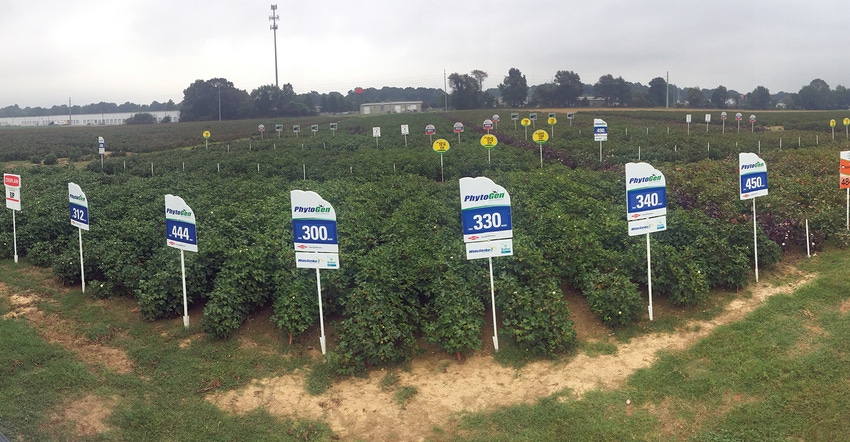
Tennessee cotton growers can now review the latest information on commercial varieties they may be considering for the 2018 planting season by reviewing the results of the 2017 Tennessee Cotton Variety Trials.
Three types of trials make up the program and replication continues to be an important aspect in the overall process. Trial results provide producers in-depth perspectives on yield, yield stability over years, fiber quality data as well as Commodity Credit Loan values.
“The six Official Variety Trials (OVTs) are replicated, small plot trials grown on Tennessee farming operations or agricultural research and education centers,” explains Tyson Raper, cotton and small grains specialist, University of Tennessee.
The large replicated on-farm variety trials and the County Standard Trials (CSTs) are conducted on large plots located across the central and western regions of the state. These two trials are reserved for only commercial varieties, while the OVTs are comprised of 42 commercial and/or experimental varieties. “My cooperators and I put together six OVTs, three large replicated trials, and 14 CSTs during 2017,” says Raper.
Varieties were randomly assigned to each plot. Fertilizer and lime were applied based on soil test recommendations prior to planting. “We also applied a systemic insecticide and fungicide in-furrow at planting,” adds Raper. “Many environmental factors influence a cotton crop, so we attempt to capture variety performance in as many environments as possible each year.”
Raper and his contributors establish trial locations so as many Tennessee cotton producers as possible benefit from the trial’s results. “If you produce cotton within the state, you are likely within 20 minutes from one of the trial sites,” says Raper. “This gives growers a chance to see how varieties perform in areas which closely represent their own.”
One aspect of the trials that caught Raper’s attention was the level of seed company diversity affirmed by the number of varieties in the upper tier of the results. The overall OVT average table shows that in the 10 highest yielding varieties, six different seed companies are represented.
Weather during the trial period was conducive to cotton production. “Similar to 2016, we received adequate mid-season rainfall that prevented drought stress from developing in any of our trial locations,” says Raper. “It was another great year to produce cotton in Tennessee, which was affirmed by the fact that this was the third year in a row the state average yields exceeded 1,000 pounds an acre.”
Go to http://bit.ly/2E6BjvF to review the complete trial procedures and results.
About the Author(s)
You May Also Like




